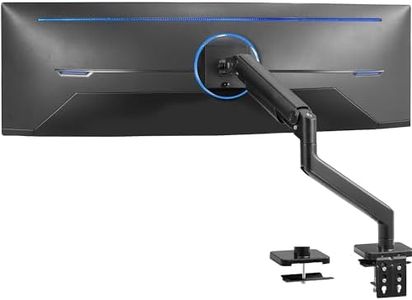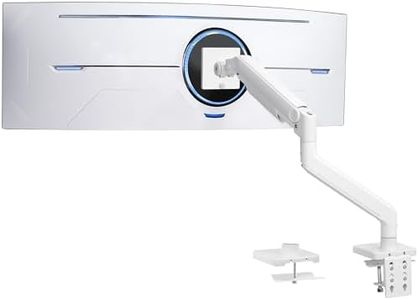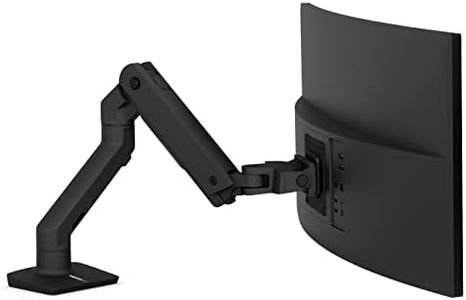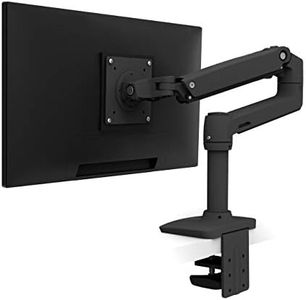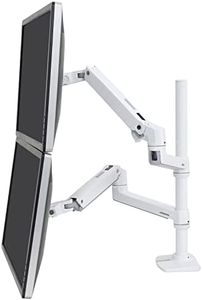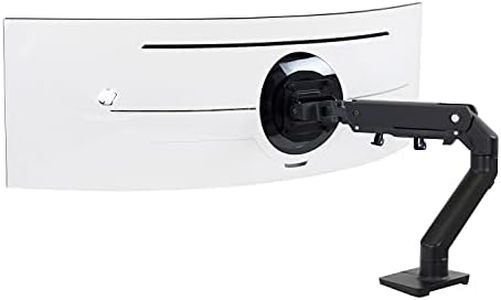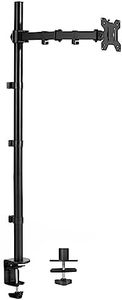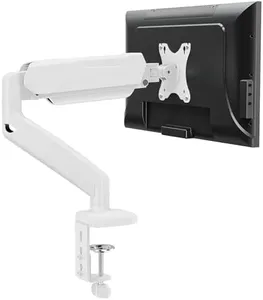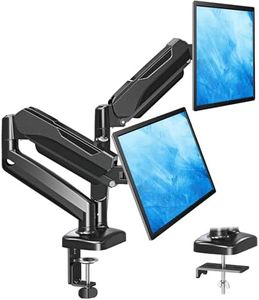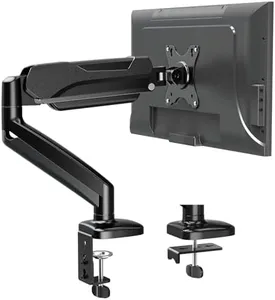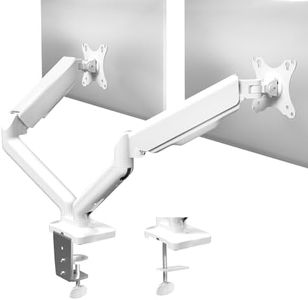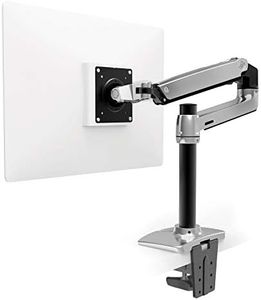We Use CookiesWe use cookies to enhance the security, performance,
functionality and for analytical and promotional activities. By continuing to browse this site you
are agreeing to our privacy policy
10 Best Monitor Arms
From leading brands and best sellers available on the web.Buying Guide for the Best Monitor Arms
Choosing the right monitor arm can make your workspace more comfortable and productive. Monitor arms help you adjust the height, angle, and position of your monitor, reducing neck and eye strain and freeing up desk space. When picking a monitor arm, it’s important to think about how you use your desk, your monitor’s size and weight, and how much you want to move your screen around. Take some time to figure out your daily habits and space needs before looking at the main specs.Weight CapacityWeight capacity is the maximum amount of weight a monitor arm can safely support. This is important because if your monitor is heavier than what the arm can handle, it could sag or even break. Monitor arms often fall into different categories: light-duty (up to 8kg/18lbs), medium-duty (up to 12kg/26lbs), and heavy-duty (over 12kg/26lbs). Check your monitor's weight (including the stand if you plan to use it) and compare it to the arm’s rating. Aim for an arm with a slightly higher capacity than your monitor to ensure stability and futureproofing.
Monitor Size CompatibilityMonitor arms are built to work with certain monitor sizes, usually listed in inches. The size affects both the stability and the range of motion. Typical segments are small monitors (up to 24”), medium (24”-32”), and large (32” and above). A smaller monitor arm may struggle with a very large screen, and using an overly large arm for a small monitor can lead to unnecessary bulk. Make sure the arm supports the physical size of your screen, not just the weight.
Mounting TypeThe mounting type is how the monitor arm attaches to your desk or wall. The most common types are clamp (grips the edge of your desk), grommet (fits through a pre-drilled hole), and wall mount. Clamps are flexible and don’t require drilling, grommets are more permanent but neater, and wall mounts require installation on a wall. Your desk thickness, stability, and whether you want to change your setup in the future should guide your choice.
Adjustability (Range of Motion)Adjustability refers to how much you can move your monitor: up and down (height), forward and back (depth), and left and right (swivel and rotate). Some arms only tilt slightly, while others offer full 360-degree rotation, vertical and horizontal extension, and easy height change. If you sit in one position all the time, basic tilt and swivel are enough. If you plan to stand, share your screen, or move it around a lot, look for greater adjustability with smooth controls.
VESA CompatibilityVESA compatibility means the arm’s mounting plate matches the mounting holes on the back of your monitor, usually measured in millimeters like 75x75 or 100x100. Most monitors and arms follow these standards, but some ultra-thin or all-in-one models don’t. Always check your monitor’s VESA size and make sure the arm supports it. Without the right fit, you won’t be able to attach your monitor securely.
Cable ManagementCable management refers to how the monitor arm helps organize and hide your monitor's wires. Some arms include channels or clips for routing cables, making your desk tidier and avoiding tangles. If you prefer a clean look or have multiple devices connected, prioritize arms with built-in cable management features. For basic setups, this is less critical, but still helpful.
